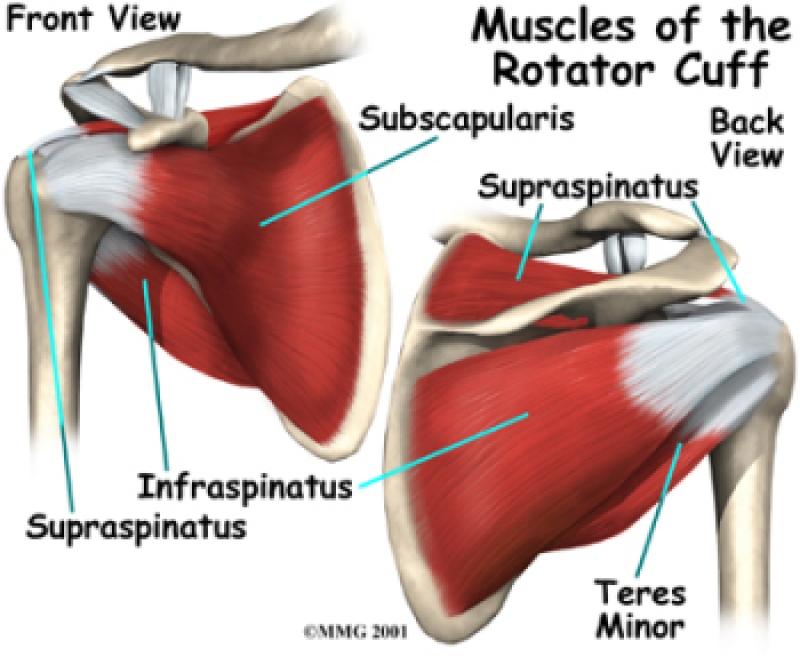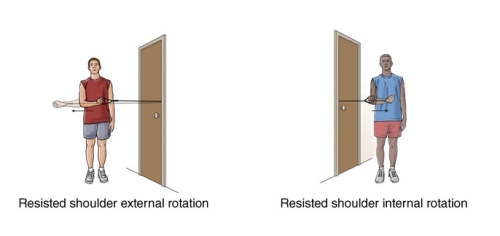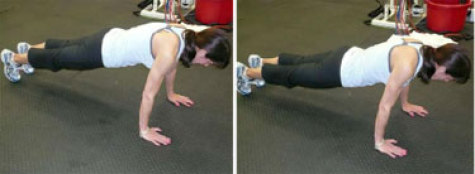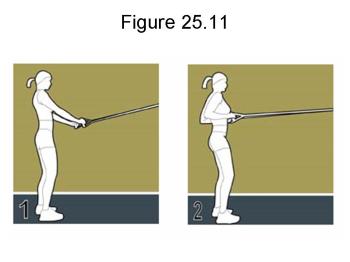Rotator Cuff Rehab

[Editor: I’m currently battling with a low-level chronic inflamed rotator cuff. This kind of injury is endemic in our sport and whitewater professional Kim Russell wrote this article on rotator cuff rehab. She kindly allowed us to republish the piece…]
A Rotator Cuff injury can happen at any time. You may have had an incident on the river that you can point to as the culprit: High bracing your way through a rapid, or like me, you may simply have woken up with a deep ache one morning.
The Rotator Cuff is comprised of four muscles that surround the Glenohumoral Joint, and provide support to the shoulder girdle.
If one or more muscles is compromised, so is stability at the joint. This means easier shoulder dislocations and other injuries. This also means that as paddlers we need to listen to our bodies and be particularly aware of the condition of our shoulders. We all need rest days here and there, especially after a long day on the river or a particularly difficult section of river. These rest days are very important in order to let our muscles recover from the stress and strain we put on them when paddling.
Rehabilitation
Below is a rehabilitation program for those of you who have suffered a rotator cuff injury, think you may have, or are simply looking for more shoulder strengthening/stabilizing exercises. For two of these exercises, therabands will be used, rather than free weights. Therabands do not depend on gravity to provide resistance, allowing for resistance in all planes, including the horizontal plane. In addition, therabands allow for strengthening in more functional movement patterns that mimic everyday activities and sports.

Start with a low resistance theraband. Internal and External Rotator Muscles tend to be neglected and a lot weaker than you think. Once you can do 3 sets of 15 easily, move up in resistance.
Tie a knot in the end of a theraband, and close one end in a door at about elbow height. Hold your arm as pictured in the above diagrams, with your forearm at a 90 degree angle to your upper arm.
Shoulder External Rotation
Place a thin pillow between your elbow and torso, acting as a bolster. Stand with the door to your right, and place the theraband in your left hand. Keeping your elbow in close to your torso, pivot at the elbow, and move your hand outward from your body. Return to the original position, slowly, and continue for three sets of ten.
Shoulder Internal Rotation
Place a thin pillow between your elbow and torso, and stand with the door to your right. Place the theraband in your right hand. Keeping your elbow in close to your torso, pivot at the elbow, and move your hand toward your stomach. Return to the original position, slowly, and continue for three sets of ten.
Push up Plus

The push up plus functions to strengthen the Serratus Anterior, a muscle that serves to pull the scapula in toward the thorax. It helps stabilize the scapula, and by default, the Glenohumeral Joint.
Start in a standard push up plank position, with a straight torso and flat back. Keeping your arms straight, push up away from the ground, and round your back slightly at the shoulder blades. The movement is very discreet. Three sets of 15 and you will feel it between your shoulder blades, no matter how in shape you are. If it is too much to start on the ground, you can modify the exercise, and do this against the wall or using the edge of a table.
Lat Rows

Close a theraband in a door just below chest level. Hold an end in each hand, start with tension on the band, and pull back on the theraband by squeezing your shoulder blades together. Over emphasize this moment, keeping your elbows close into your torso. Slowly return to the original position, and continue for 3 sets of 10.
If it hurts, stop!
These four exercises are a start to a rehabilitation program for the injured rotator cuff. You may need to lay off paddling whitewater for a few weeks, if needed, and focus on basic strengthening. The rule of thumb is to stop if you have any pain, and to balance rehab with rest. Try stretching, massage, acupuncture, and physical therapy, if needed. Last of all, don't lose hope! Our bodies DO heal, they just need time and lots of rest!
**Kim Russell has a B.S. in Human Physiology from the University of Oregon. She is currently working as a Physical Therapist Aide, earning glances into stretches, strengthening exercises and mobilization techniques for paddlers. These techniques are ones that she has found to work for herself in strengthening her shoulder muscles, and may not be suitable for some individuals. Consult your physician before trying any of these exercises.**

